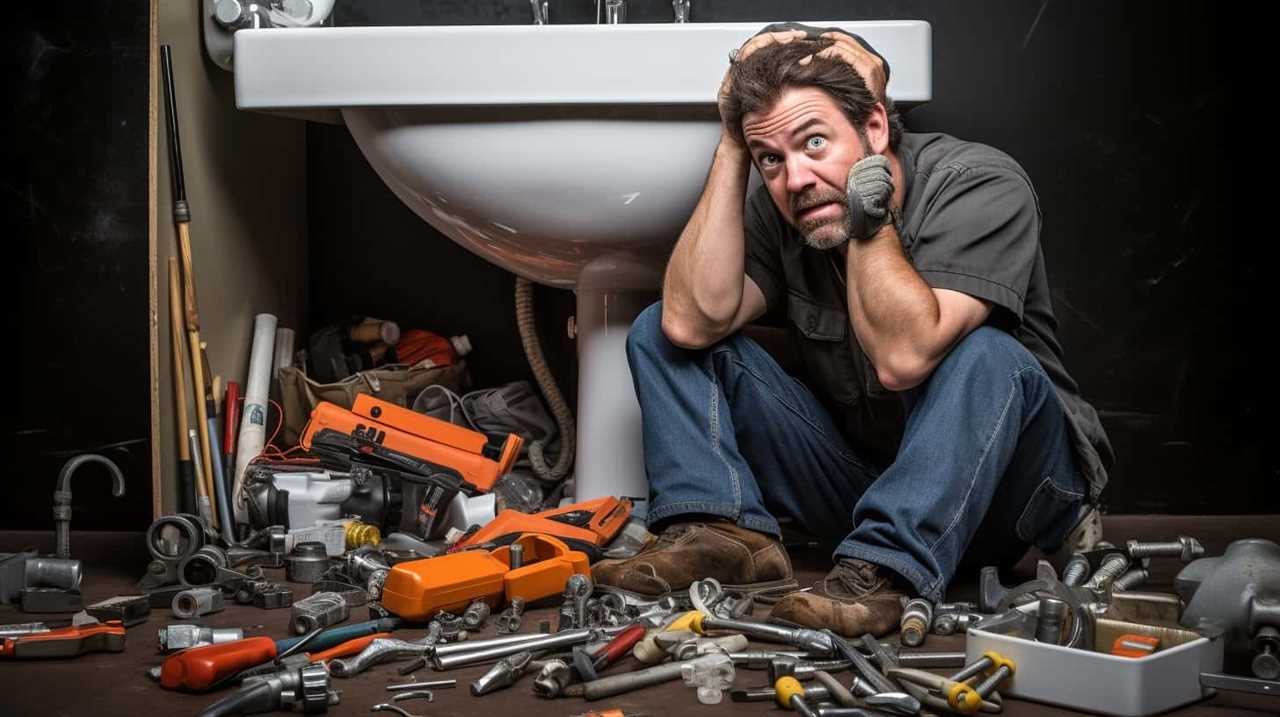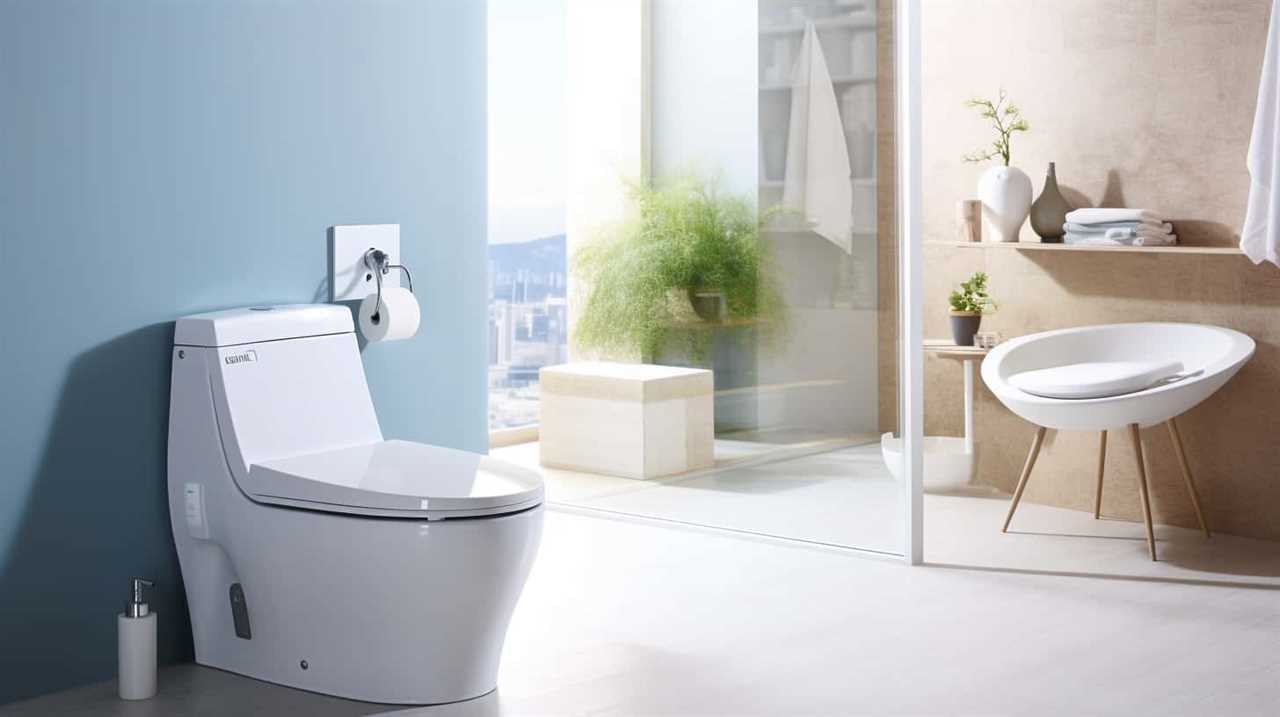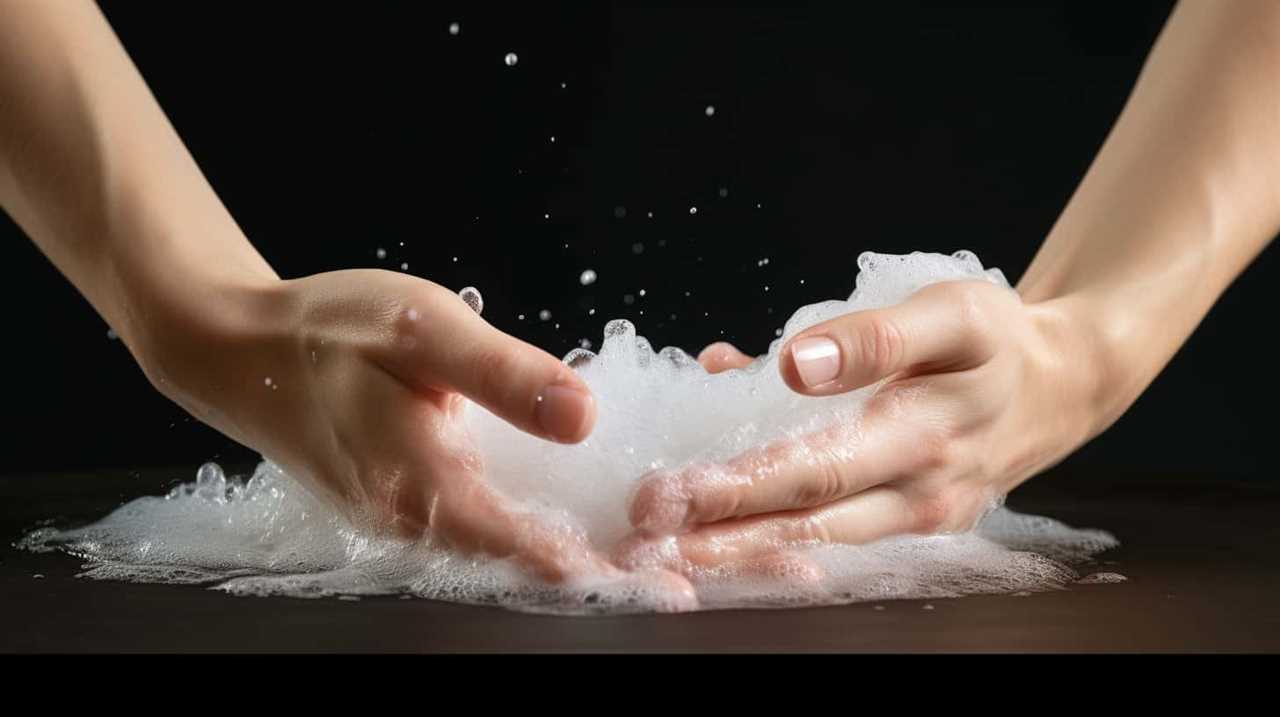Swapping out a bathroom faucet might appear intimidating, but don’t worry! We’re here to help you through each step of the process. By having the necessary tools and materials on hand, shutting off the water supply, taking out the old faucet, and setting up the new one can be a simple task.
And don’t worry, we’ll show you how to test for leaks to ensure a masterful finish.
Get ready to conquer the art of faucet replacement with our technical and detailed instructions.
Key Takeaways
- Turn off the water supply before starting the faucet replacement process
- Use the appropriate tools, such as an adjustable wrench and basin wrench, to remove the old faucet and install the new one
- Apply plumber’s tape to the threads of the water supply lines to ensure a tight seal
- Test for leaks and ensure proper functionality after installing the new faucet
Gather the Necessary Tools and Materials
We will gather the necessary tools and materials to replace the bathroom faucet.

Before starting the project, it’s important to find the right faucet style that suits your bathroom decor. There are several types of bathroom faucets available, including single-handle, double-handle, and wall-mounted faucets. Understanding the different types will help you make an informed decision.
Now, let’s gather the tools and materials needed for this task. You’ll require an adjustable wrench, pliers, a basin wrench, Teflon tape, a bucket, and a cloth. Additionally, you’ll need a new faucet, supply lines, and a drain assembly.
Ensure that you have all the necessary tools and materials before proceeding to the next step.
Turn off the Water Supply
To begin the process of replacing a bathroom faucet, it’s important to first turn off the water supply. Shutting off the water is crucial to prevent any leaks or flooding during the replacement process.

Start by locating the shut-off valves under the sink. These are usually located on the wall or the pipes leading to the faucet. Turn the valves clockwise until they’re fully closed. This will stop the water flow to the faucet.
Once the water supply is shut off, you can proceed with confidence knowing that no water will be flowing while you work.
Now that the water is turned off, it’s time to move on to the next step: removing the old faucet.
Remove the Old Faucet
After turning off the water supply, we can now proceed to remove the old faucet.

To remove the old faucet, follow these steps:
- Disconnect the supply lines: Use an adjustable wrench to loosen and remove the nuts connecting the supply lines to the faucet. Be prepared to catch any water that may still be in the lines.
- Remove the mounting nuts: Locate the mounting nuts that secure the faucet to the sink or countertop. Use a basin wrench to loosen and remove these nuts. If the nuts are stuck, try spraying them with a penetrating oil and wait a few minutes before attempting to remove them again.
- Lift the old faucet off: Once the nuts are removed, carefully lift the old faucet off the sink or countertop. Be mindful of any remaining water that may still be trapped in the faucet or supply lines.
Proper disposal of the old faucet is essential. Check with your local waste management facility to determine the best way to dispose of it, as some areas have specific guidelines for the disposal of plumbing fixtures.
During the removal process, you may encounter some common issues. Here are a few troubleshooting tips:
- Stuck nuts: If the mounting nuts are difficult to remove, try using a pair of pliers or a wrench for extra leverage. Apply steady pressure while turning counterclockwise to loosen the nuts.
- Corroded connections: If the supply lines are corroded and won’t disconnect easily, you may need to use a hacksaw to carefully cut through the fittings. Exercise caution to avoid damaging the sink or countertop.
- Stubborn faucet: If the faucet is stuck and won’t lift off, try applying some penetrating oil around the base and let it sit for a few minutes. Gently tap the sides of the faucet with a rubber mallet to loosen it before attempting to lift it off again.
Install the New Faucet
Now, let’s move on to installing the new faucet. Before we begin, let’s talk about the benefits of upgrading to a modern and stylish bathroom faucet. Not only will it enhance the overall aesthetic of your bathroom, but it can also improve functionality and water efficiency.

Now, let’s get into the installation process.
- Start by placing a rubber or plastic gasket onto the faucet’s base.
- Insert the faucet through the mounting holes and align it properly.
- From underneath the sink, secure the faucet using mounting nuts or a bracket.
- Use a wrench to tighten the nuts, being careful not to overtighten.
To help maintain and clean your bathroom faucet, follow these tips:
- Regularly wipe the faucet with a soft cloth to remove water spots and fingerprints.
- Use mild soap and water to clean the faucet, avoiding harsh chemicals that can damage the finish.
- Periodically check for any leaks or loose parts and tighten as necessary.
Test and Check for Leaks
We will now thoroughly test and check for any potential leaks in the newly installed bathroom faucet. It’s crucial to ensure that the faucet is properly sealed to prevent any water leakage.
Here are three steps to troubleshoot leaks and verify the effectiveness of the sealing techniques:

- Turn on the water supply: Gently turn the water supply valves beneath the sink to allow water flow to the faucet. Observe closely for any signs of dripping or water leakage around the base of the faucet.
- Inspect the connections: Carefully examine the connections between the faucet and the water supply lines. Check for any loose fittings or gaps that may indicate improper sealing. Tighten any loose connections as necessary.
- Test all handles and knobs: Operate all handles and knobs on the faucet to ensure they function smoothly without any water seepage. Pay special attention to the hot and cold water handles, as they’re commonly prone to leaks.
Frequently Asked Questions
How Do I Choose the Right Bathroom Faucet for My Needs?
When choosing a bathroom faucet, we consider the finishes and styles available. Faucet finishes range from chrome to brushed nickel, each with their own pros and cons. Different styles include single-handle, widespread, and wall-mounted options.
Can I Install a New Bathroom Faucet Without Turning off the Water Supply?
We can’t install a new bathroom faucet without turning off the water supply. However, there are alternative methods like using a shut-off valve or temporarily blocking the water flow to make the process easier.
What Should I Do if the Old Faucet Is Stuck and Difficult to Remove?
If the old faucet is stuck and difficult to remove, we recommend using lubricants to loosen it. If that doesn’t work, it may be best to call a professional plumber for assistance.
Are There Any Additional Steps or Precautions to Take When Installing a Touchless Bathroom Faucet?
When installing a touchless bathroom faucet, it is important to follow the manufacturer’s instructions and pay attention to any additional steps or precautions. Troubleshooting touchless faucets may involve checking the battery life and sensor placement.

How Often Should I Check for Leaks After Installing a New Bathroom Faucet?
When installing a new bathroom faucet, it’s important to regularly check for leaks. After installation, we should consistently monitor for any signs of water leakage and promptly troubleshoot and fix any issues that arise.
Conclusion
In conclusion, replacing a bathroom faucet is a simple and straightforward process that can be completed with basic tools and materials. By following the step-by-step instructions outlined in this article, you can successfully remove the old faucet and install a new one.
Remember to turn off the water supply before starting and test for any leaks afterwards. With patience and careful attention to detail, you can easily accomplish this DIY task and enjoy a refreshed bathroom.










